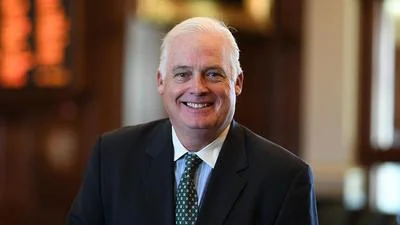State Representative Michael Coffey (IL) | Representative Michael J. Coffey, Jr. (R) 95th District
State Representative Michael Coffey (IL) | Representative Michael J. Coffey, Jr. (R) 95th District
Pledge of Allegiance Day is observed annually to commemorate the adoption of the pledge by Congress in 1945. The original pledge was penned by Francis Bellamy in honor of the 400th anniversary of America's discovery, celebrating national values such as freedom, integrity, and unity.
The Pledge of Allegiance first appeared in print in 1892 within The Youth’s Companion children’s magazine. It was written by Francis Bellamy, a Baptist minister from New York who also chaired the committee advocating for public schools to celebrate Columbus Day. Initially, the pledge read: “I pledge allegiance to my Flag and the Republic for which it stands, one nation, indivisible, with liberty and justice for all.”
In 1923, "the Flag of the United States of America" was added to clarify which flag was being referenced. Later in 1948, Louis Bowman suggested including “under God,” an idea that gained traction when President Dwight D. Eisenhower urged Congress to incorporate it into the pledge. This amendment was officially enacted on June 14, 1954—Flag Day.
Today, reciting the Pledge of Allegiance remains a common practice across various events and settings throughout America. It serves as a reminder of patriotism and loyalty while reflecting on national freedoms. Recitations are typical during Congressional sessions, government meetings, Veterans’ Day ceremonies, and school activities nationwide.
As part of this tradition, participants stand facing the American flag with their right hand over their heart—a custom practiced by millions each day across schools in America.
Let today serve as a reminder that our revered Pledge of Allegiance is the identity of America and a promise we make to stay loyal to our country.






 Alerts Sign-up
Alerts Sign-up